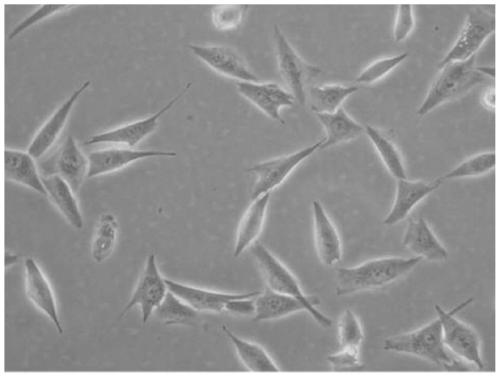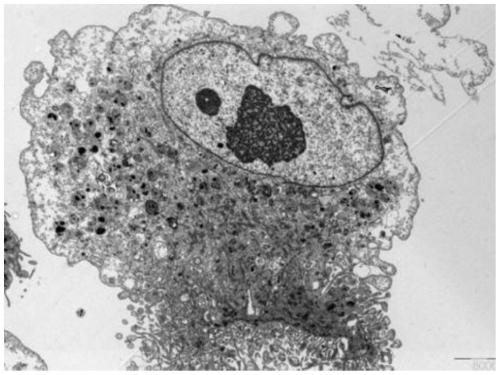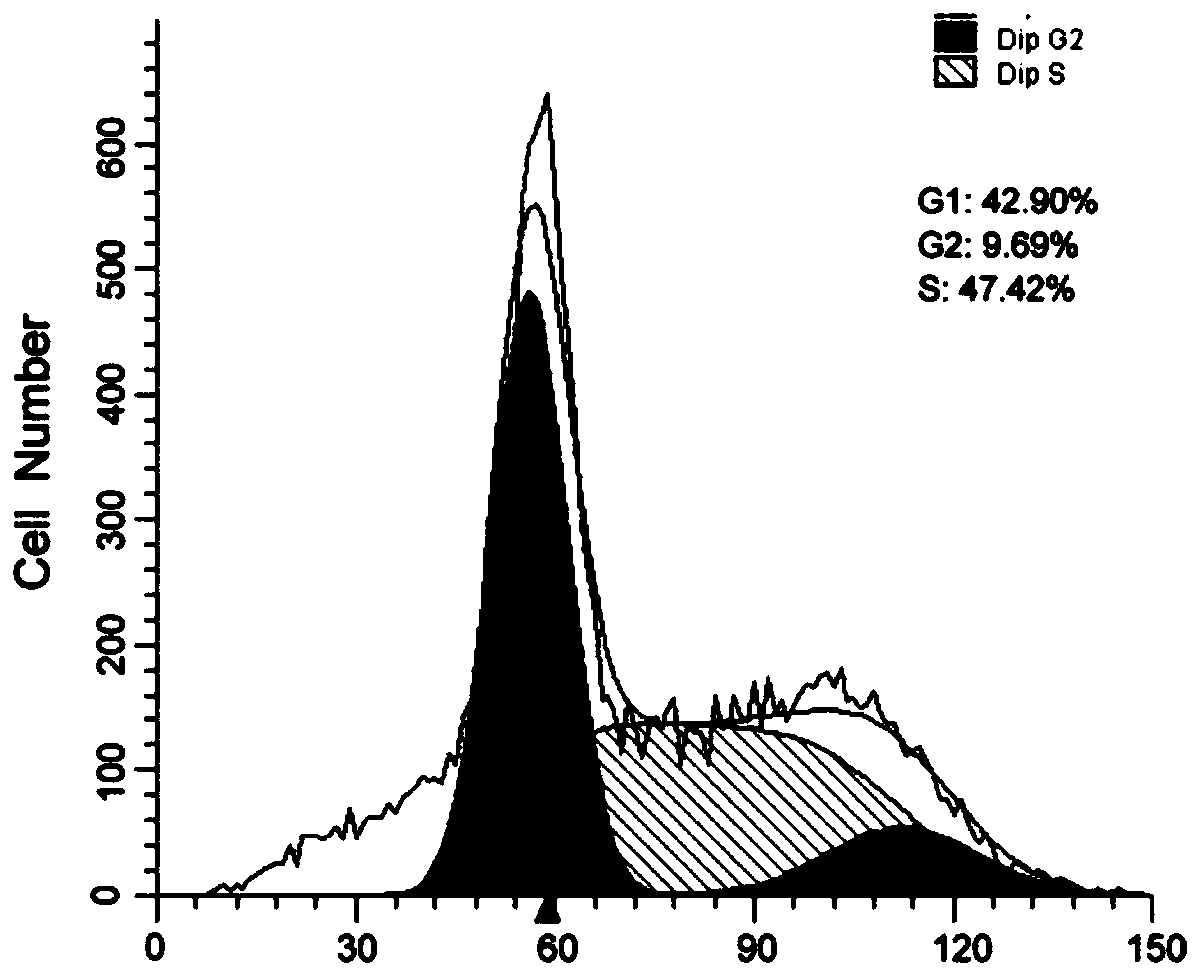Primary human osteosarcoma cell strain NEO217-luc from spine and construction method and application of cell strain
A neo217-luc, osteosarcoma cell technology, applied in the field of biomedicine, can solve problems such as difficult biological behavior of spinal osteosarcoma, and achieve the effects of good tumorigenicity, fast and stable growth
- Summary
- Abstract
- Description
- Claims
- Application Information
AI Technical Summary
Problems solved by technology
Method used
Image
Examples
Embodiment 1
[0031] Example 1 Primary Culture and Establishment of Spinal Osteosarcoma Cell Lines
[0032] Part of the sterile fresh tumor specimens from patients with spinal osteosarcoma after surgical resection were sent to the pathology department for pathological examination to confirm osteosarcoma. room for follow-up processing.
[0033] Pour the specimen in the centrifuge tube into a 10cm sterile petri dish in the cell ultra-clean workbench, wash it repeatedly with Hanks solution to remove the red blood cells adhered to the surface of the specimen, and cut the tissue block repeatedly to mince shape with sterile tissue scissors , move the tissue into a 50ml sterile centrifuge tube containing 10ml DMEM medium (Gibco, USA), add 10μl of type II collagenase, add penicillin (100U / ml) and streptomycin (100mg / ml) at the same time, put it in a constant temperature Oscillate at a speed of 200 times / min in an oscillator at 37°C, take it out after 2 hours, blow and mix it with a Pasteur pipette...
Embodiment 2
[0039] Embodiment 2 Human primary osteosarcoma cell line growth cycle
[0040] Collect 1×10 cells in the logarithmic growth phase 6 , resuspend the cells with 300μl PBS, add the cells dropwise to 700μl pre-cooled absolute ethanol, fix overnight at 4°C in the dark, centrifuge at 800g for 10min, remove the supernatant, wash twice with PBS, and resuspend the cells in 500μl containing 100u / ml RNaseA in PBS buffer, incubate at 37°C for 30 minutes in the dark, add 2 mg / ml PI to a final concentration of 50 μg / ml, and incubate in the dark for 30 minutes, take the PI fluorescence reading as the abscissa, and the cell number as the ordinate, in the flow cytometer The number of cells in each phase of the cell cycle was counted on a cytometer.
[0041] Experimental results: image 3 For the cell growth cycle of the primary human osteosarcoma cell line, the image 3 It can be seen that the cells G1 = 42.9%, G2 = 9.69%, and S = 47.42% as determined by the flow cytometer.
Embodiment 3
[0042] Example 3 Cell Proliferation Experiment
[0043] This experiment adopts the CCK8 method, and the operation steps are as follows: inoculate the cells in the logarithmic growth phase in a 96-well plate at a concentration of 5000 / 200 μl, set 5 controls in each well, and co-culture for 7 days. On day 2, day 4 and day 7, add 20 μl of CCK8 to each well and incubate together for 3.5 hours; then shake well with a horizontal shaker to fully dissolve Formazane; use an automatic microplate reader at a wavelength of 450 nm to measure The A(OD) value of each well was taken as the average value to trace the growth curve of each cell. This experiment was repeated 3 times to obtain the cell growth curve as follows: Figure 4 shown.
[0044] Experimental results:
[0045] The osteosarcoma cell that this embodiment builds the line grows rapidly, and the cell value is by 1 * 10 4 Proliferated rapidly to 7.8 × 10 on day 8 4 , with an average doubling time of 48h.
PUM
 Login to View More
Login to View More Abstract
Description
Claims
Application Information
 Login to View More
Login to View More - R&D Engineer
- R&D Manager
- IP Professional
- Industry Leading Data Capabilities
- Powerful AI technology
- Patent DNA Extraction
Browse by: Latest US Patents, China's latest patents, Technical Efficacy Thesaurus, Application Domain, Technology Topic, Popular Technical Reports.
© 2024 PatSnap. All rights reserved.Legal|Privacy policy|Modern Slavery Act Transparency Statement|Sitemap|About US| Contact US: help@patsnap.com










